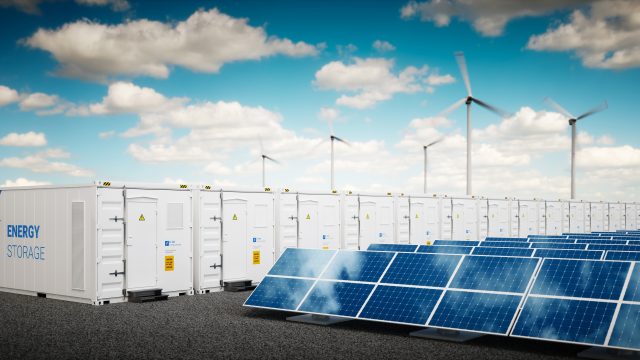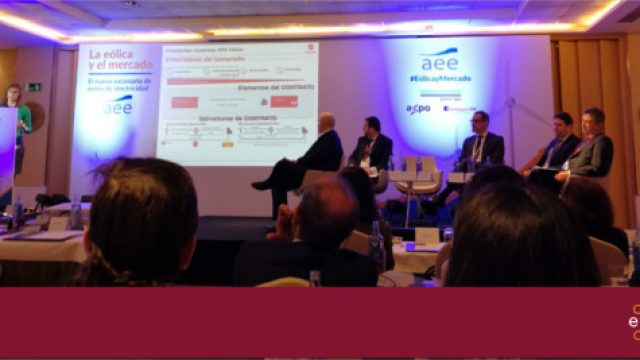Seven trends to make or break corporate PPAs
September 2018
In this article, published in PV Magazine International’s September 2018 edition, Everoze partner Ragna Schmidt-Haupt is putting corporate PPAs to the test.
Something interesting is happening in the PV market. We’re not just seeing an emergence of corporate power purchase agreements (cPPAs) in parity geographies – but also compelling innovation in the commercial models which underpin them. Despite the challenges of offtaker risk, contract duration, and assorted other contractual oddities when financing renewable energy projects in this way, leading lenders are just about getting used to the idea of private offtake agreements. But are they ready for other commercial-disrupters like blockchain, ‘power and flexibility agreements,’ pooling of medium-sized energy suppliers, and PV-storage hybrid projects?

Renewables markets are seeing a clear growth in corporate PPAs – a record 1.4 GW of them were executed in 2017. While this offtake was mostly from wind farms, solar projects are clearly on the rise. Recent project examples include the whopping 170 MW solar PPA secured by BayWa in Spain, Hyperion’s 29 MW PPA in Portugal, and Belltown Power’s refinancing of a wind project in the U.K. on the back of a long-term cPPA.
Some cPPAs are described as ‘synthetic,’ as they are long-term products based on financial derivatives. Synthetic cPPAs are offered by certain end consumers and in some markets by energy supply companies, guaranteeing a fixed offtake price. Demand for synthetic cPPAs is being driven not only by grid parity markets, but also by environmentally conscious companies, looking to make good on corporate social responsibility commitments, albeit at a small market premium.
Elsewhere, many projects are being deployed under private wire agreements, whereby an independent power producer delivers energy directly to the corporate offtaker via the consumer’s site network, and so there is no use of the distribution or transmission systems. This approach is typically adopted by large power users, such as mines or large factories.
A third contractual option is the sleeved cPPA, under which energy delivery from the generator’s site to the corporate offtaker is facilitated by an intermediary such as an electricity supplier via a back-to-back supply arrangement between the corporate offtaker and the supplier.
As more cPPA projects are executed, investors and lenders are starting to get comfortable with the model, so long as offtaker risk is considered reasonable. This is a good start, but for now at least additional commercial innovations have been shunned. Here are some examples of what we can expect as the cPPA model matures further:
1. Flexible pricing with caps and floors to achieve a price band might seem challenging for lenders at first. However, with continued cost reductions and carbon liabilities on the rise, viable project cash flows could be secured by this approach.
2. Short duration cPPAs: The current “sweet spot” for PV projects is an offtake contract of 10 to 15 years. Although most of Europe’s solar fleet is still relatively ‘young,’ assessing and preparing for end of life can help boost the valuation of projects during the acquisition bidding phase. While PV has a significantly longer useful technical life than the current tariff schemes, short duration cPPAs help with the revenue structuring after the expiration of granted long-term tariffs.
3. Hybrid projects: In many parity markets, on islands or in remote mining regions, hybrid PV and battery storage systems are becoming commercially viable, meeting the twin demands of reduced cost and local system stability. We are seeing the emergence of this model in a utility-scale off-grid setting in Australia and Africa, with many projects also incorporating energy storage. There is an increasing appetite from developers and investors for cPPAs in these areas, dragging with them lenders and the need for them to get to grips with the technology risk of batteries.
4. Structural and regulatory changes: While cPPAs are a lot more common in the U.S. and Australia, in Europe they are quite a recent trend, with most activity happening over the last four to five years. cPPAs nowadays are increasingly signed against a backdrop of changing regulation and shifting market structures, with the XBID and RED II initiatives leading to Europe-wide opportunities. The XBID implementation, for example, expands the revenue horizons for renewables projects beyond the day ahead market and intraday market periods. RED II should pave the way for direct marketing of green electricity via PPAs in all member states from 2021. While Sweden and Norway have the most favorable regulations with regards to cPPAs, Germany limits their use to only those plants which do not receive regulated support. Understanding countryspecific regulations is key to further adoption of cPPAs by lenders.
5. Ancillary services development: Grid services provided by renewables are at a nascent stage in most European countries, with the exception of some pioneering activity by wind assets in Spain, providing tertiary control for example. Ongoing grid code harmonization within the European electricity market will become an important driver for new joiners such as Greece or Portugal. This is likely to spur innovation in flexibility procurement, with knock-on implications for renewables and storage projects. So maybe, just maybe, in the future we’ll see the rollout of ‘power and flexibility agreements’ (PFAs) rather than straightforward cPPAs in these and other markets – with renewables projects being rewarded for providing services to transmission system operators as well as being paid by the corporates for the clean kilowatt hours.
6. Pooling of small to medium-sized cPPAs: In the mid-term, cPPAs will be signed not just by corporations, but also by aggregations of consumers and producers. This should give a much needed boost to the size of the market, but with the unwanted side effect of increasing complexity for lenders. Like PV rooftop portfolios, the pooling of medium-sized suppliers with standardized contracts will be the natural next step for lenders to provide project financing to a new era of energy systems.
7. Continued efforts to ensure Renewable Energy Guarantees of Origin (REGOs): As Everoze has repeatedly highlighted, REGOs will become essential to a successful cPPA deal, especially for the growing number of corporates considering a carbon neutral energy supply. Looking to the longer term, blockchain solutions have the potential to create an immutable record of REGOs.
While the speed and ultimate extent of the trends identified above are highly uncertain, one thing is clear: cPPAs are here to stay. With accelerating regulatory change, technological development, and shifting market dynamics, more variants will emerge to help cement post-subsidy business models for renewables well beyond European markets. The challenge, as always, will be to find the right mix of technical solutions and commercial structures to effectively de-risk these new models and mobilize the low cost capital required. In the weird and wonderful world of cPPAs, the only certainty is change itself.






